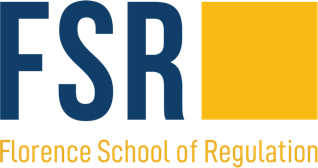Multimodality in times of competitiveness: how to move forward?
This article by Benjamin Ledwon, Head of Amadeus EU Representation, originally appeared in the European Transport Regulation Observer 'Single Digital Booking and Ticketing'
Fostering multimodality is one of the principal EU policy objectives for transport.[1] This is a good development as multimodal transport drives consumer welfare and demand for transport operators and helps to achieve sustainability targets.[2] Europe has an opportunity to be a frontrunner with all the right ingredients in place. It will be important to find a smart targeted approach under the new doctrine of competitiveness which prioritises the need for simpler regulation, better economic conditions for companies and the ability to (digitally) innovate.
The EU is planning to release a legislative package on multimodal digital mobility services (MDMS) and needs to keep this central objective in mind. Regulation can only be part of the solution and it should not become an end in itself. For instance, to make multimodal traffic grow in Europe, it is important to foster and continue investing in an integrated multimodal infrastructure, as seamless integration of air and rail only becomes a reality if there is a train station next to an airport in the first place.
Current business and technology trajectories
Any intervention in transport ticketing needs to be targeted and proportionate, and based on a solid market failure assessment that would justify any potential intervention while ensuring proper enforcement of existing regulations. This applies in particular to the MDMS market, which is maturing with different stakeholders, different modes of transport and different services. Two examples: First, distribution in rail works differently – mostly with a national and regional scope – as opposed to the global aviation industry. Second, the role and business model of a B2B global distribution system (GDS) are different to those of B2C players such as meta-search companies, online travel agencies and independent distribution platforms in the multimodal distribution ecosystem.
Fostering multimodality is a key EU policy objective for transport, along with promoting consumer welfare, demand for operators, and sustainability. Any interventions in transport ticketing must be targeted and based on thorough market assessments. The dynamics differ between rail and aviation, and the roles of various distribution systems (B2B versus B2C) also vary. The EU must evaluate the functioning of these markets and understand their technological trajectories, as emerging public policy objectives like sustainability may limit innovation under current regulations. To enhance global transport distribution, more diverse transport services are available, facilitating multimodal integration. GDSs play a vital role in fostering competition and should operate without restrictive regulations that hinder their market potential. Policy proposals must be evidence-based and avoid replicating existing platform regulations, allowing companies the freedom to innovate and invest.
The EU needs to determine if the market is working properly in these areas and understand its technological and business trajectory. In the case of GDSs, as opposed to the origins of GDS regulation, these systems are no longer owned by airlines and the risk of conflicting interests has disappeared. Second, the MDMS ecosystem has significantly broadened with new commercial players and new services but without a level playing field. Most importantly, on the technology side, new distribution capabilities allow transport operators much more “control over their inventories” and adopt a multimodal distribution strategy that prioritises direct sales. Last, with new public policy objectives emerging, such as on sustainability and inclusion of more transport modes, current legislation is limiting innovation, e.g. to allow GDS systems to rank on these criteria. As a result, the current CRS code of conduct is not fit for purpose, as was concluded in the most recent impact assessment in the EU Commission’s last term.[3]
Level the playing field for global transport distribution
More transport products and services (by over 400 airlines, 25 rail operators and 90 mobility providers) are sold today by hundreds of thousands of travel agents globally, allowing to increase the reach for operators and facilitate the connection of different modes of transport.[4] It is in the interest of GDSs to make as much content available without the risk of foreclosing markets. They help to foster competition among operators on the merits of their offer, can integrate different transport modes and be an important factor in any equation that tries to solve multimodality.
Therefore, any policy proposal needs to be targeted and based on clear evidence of market failure while considering existing laws. It should not simply replicate the structure of existing platform regulations such as the Digital Markets Act, which operates in a different context with evident structural competition problems. Any policy option should leave companies the freedom to operate commercially to avoid damage to competitiveness and potentially negative consequences for investment capabilities.
At Amadeus we consider ourselves a strong partner in achieving the main objectives of EU transport policy. Our business model makes transport offers more visible while ensuring consumer transparency and promoting competition. As the fifth largest investor in software R&D in Europe – a crucial pillar of future competitiveness in a changing world according to Draghi’s recent report – Amadeus’s innovation-friendly approach with a high level of investments supports the EU’s objectives.[5]
Read the full Policy Brief ‘Single digital booking and ticketing, and multimodal digital mobility services’ for more information.
[1] U. von der Leyen, Europe’s Choice, Political Guidelines for the next Commission (July 2024), p.9.
[2] A.T. Kearney, Fully connected digital mobility services (Nov 2022).
[3] EU Commission, SWD on Evaluation of Regulation 80/2009 (Jan 2020) Link, p 49.
[4] Amadeus Annual Report, Global Report (April 2024).
[5] EU Joint Research Centre, EU Industrial R&D Investment Scoreboard (Dec 2022).




